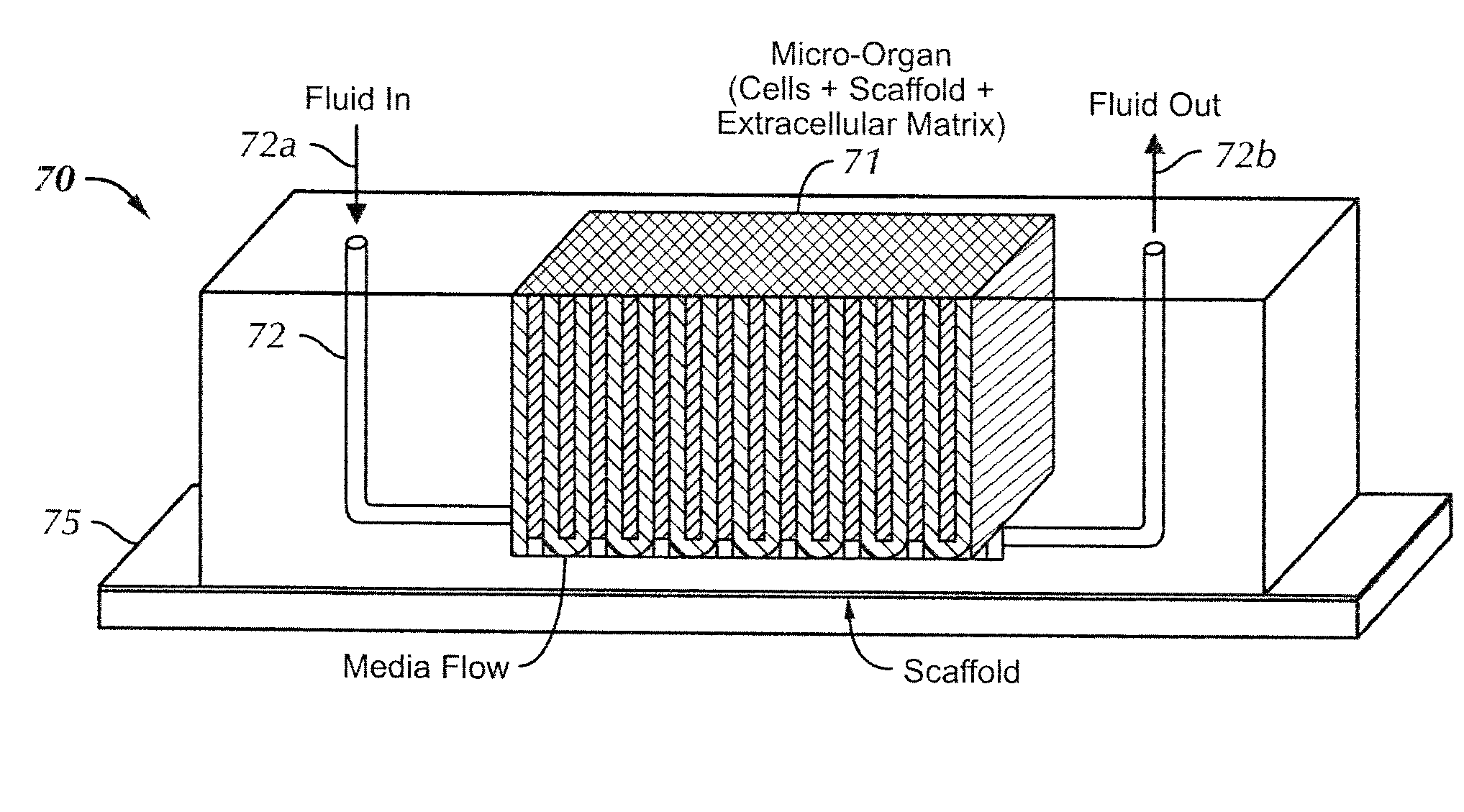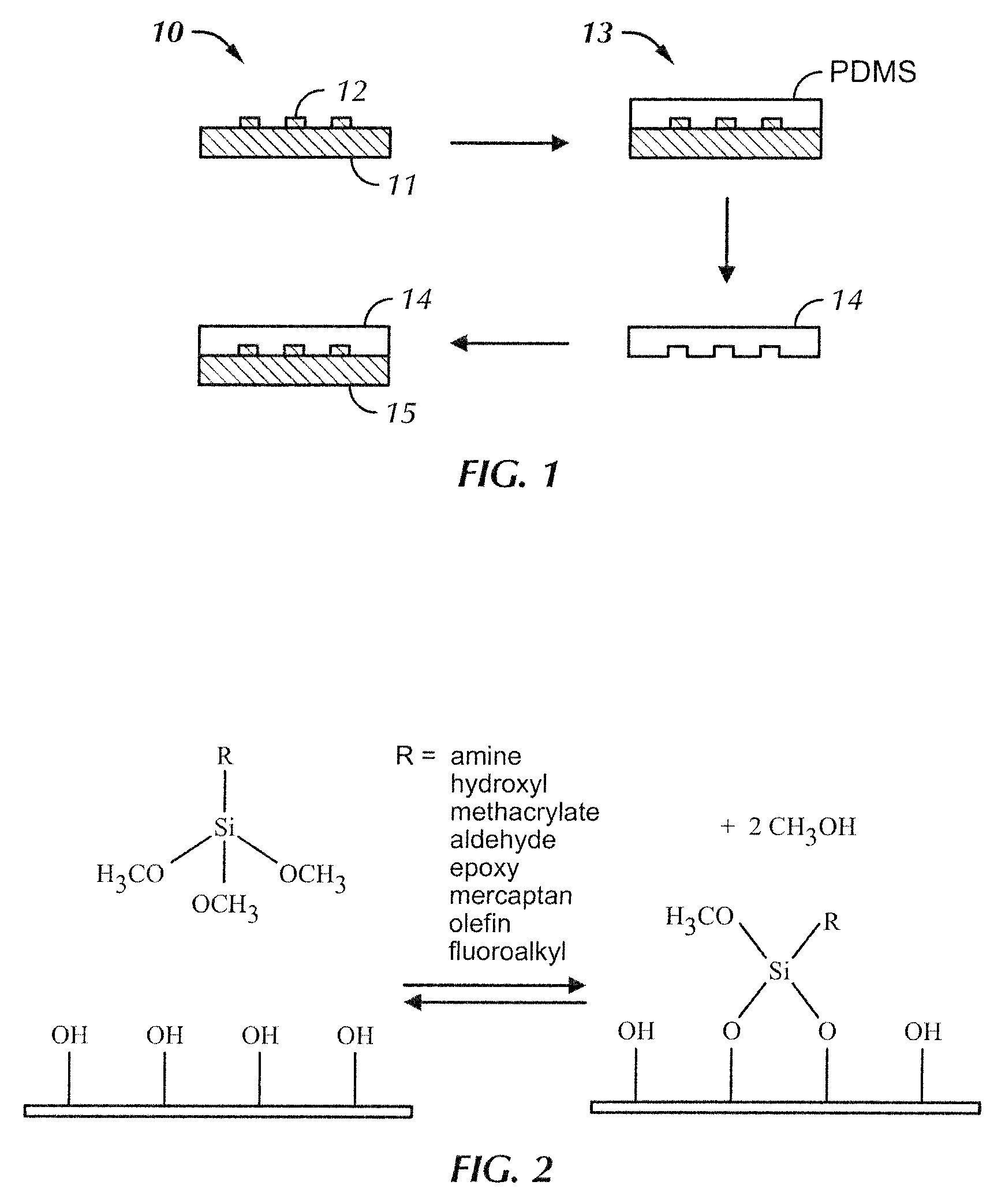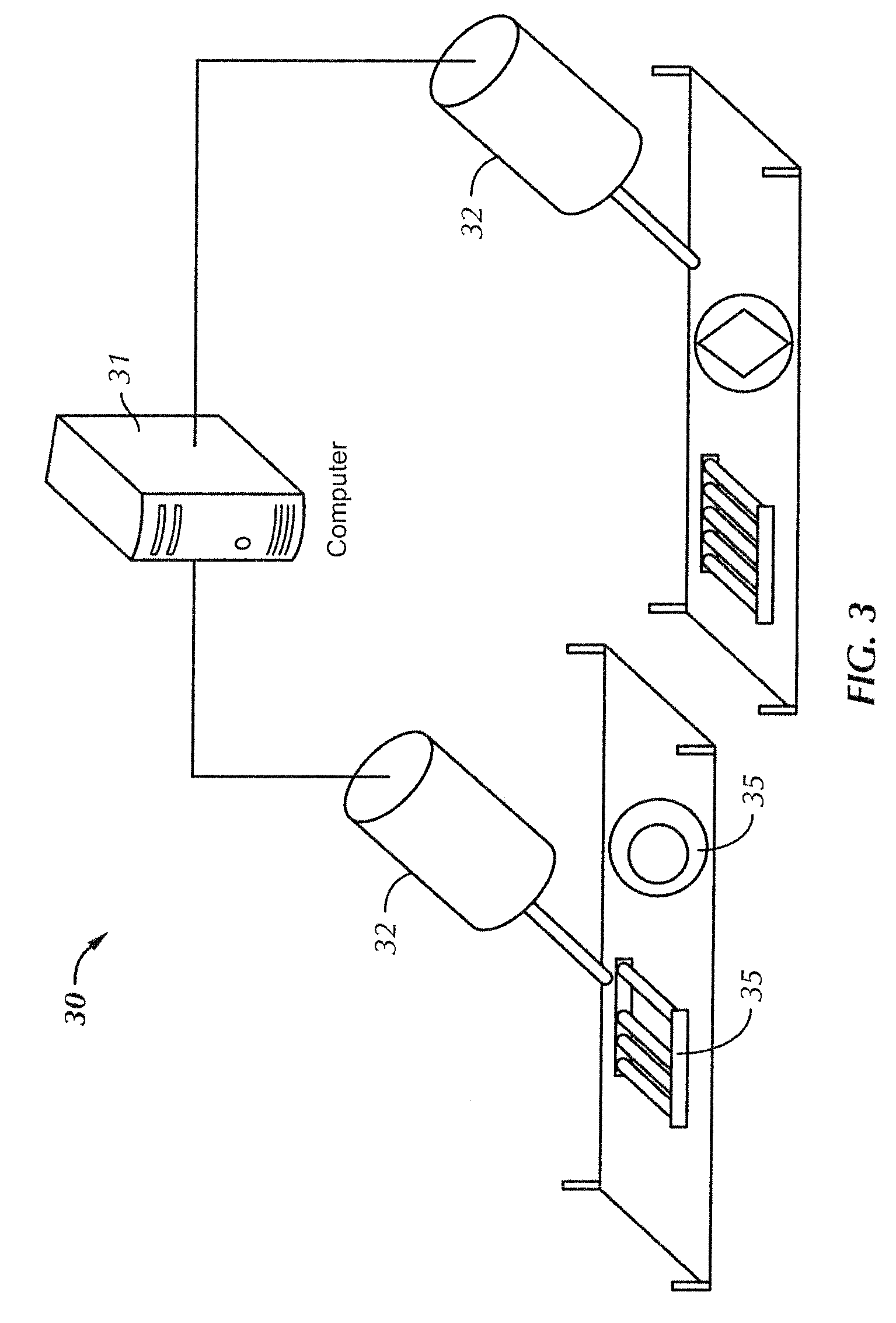Micro-organ device
a microorganism and device technology, applied in the field of microorganism devices, can solve the problems of difficult extrapolation of in vitro data (e.g., cell culture data) to the in vivo relevant conditions, and the inability to test pharmaceuticals and biological compounds in humans or animals is not always possible,
- Summary
- Abstract
- Description
- Claims
- Application Information
AI Technical Summary
Benefits of technology
Problems solved by technology
Method used
Image
Examples
Embodiment Construction
[0026]Exemplary embodiments of the invention will now be described with reference to the accompanying figures. Like elements or components in the figures are denoted with the same reference characters for consistency.
[0027]Before beginning a detailed description of some exemplary embodiments of the invention, the meaning of certain terms as used herein will be given.
[0028]“Bioprint” or “bioprinting”, as used in this description, refers to a process of depositing biological materials, such as, for example, forming micro-organs using a computer-aided tissue engineering (CATE) system to print a micro-organ according to a particular design or pattern. These processes will be described in more detail below.
[0029]“Microscale” as used herein refers to dimensions no greater than 10 cm, preferably no greater than 1 cm.
[0030]“Microchip” as used herein refers to a microscale support having one or more microfluidic channels and one or more micro-chambers for housing micro-organs. A microchip ty...
PUM
| Property | Measurement | Unit |
|---|---|---|
| width | aaaaa | aaaaa |
| temperature | aaaaa | aaaaa |
| width | aaaaa | aaaaa |
Abstract
Description
Claims
Application Information
 Login to View More
Login to View More - R&D
- Intellectual Property
- Life Sciences
- Materials
- Tech Scout
- Unparalleled Data Quality
- Higher Quality Content
- 60% Fewer Hallucinations
Browse by: Latest US Patents, China's latest patents, Technical Efficacy Thesaurus, Application Domain, Technology Topic, Popular Technical Reports.
© 2025 PatSnap. All rights reserved.Legal|Privacy policy|Modern Slavery Act Transparency Statement|Sitemap|About US| Contact US: help@patsnap.com



